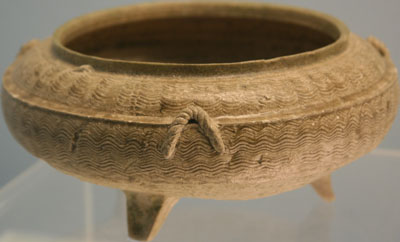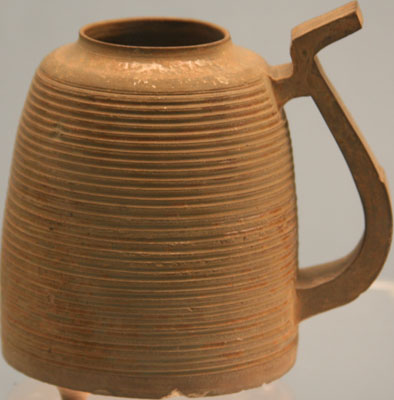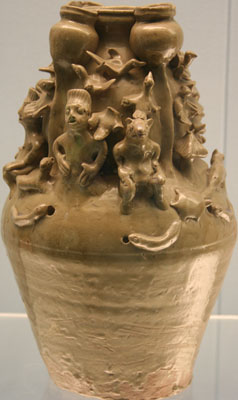Decorative Designs in Chinese Art 中国文物的纹饰
Porcelain 瓷器 Early Period 早期
Click on any word to see more details.
Early Period 早期
References differ on the exact time of origin. [Li Li, 2004] provides a range from the Shang (c. 1700 to 1045 BCE) to the Zhou (1045—221 BCE). [Fang 2010] gives the Han Dynasty. The Shanghai Museum has several artifacts from the Spring and Autumn Period (770—476 BCE) and the Warring States Period (445—221 BCE) that it labels as Celadon. Two of those are shown below.

There are several distinguishing characteristics of porcelain compared with other pottery:
- Lower iron oxide and increase content aluminum oxide so that the body can be white
- Firing temperature of at least 1,200 degrees Celsius
- Use of glaze
Glaze was usually made from quartz, feldspar, and clay. It first appeared in the Shang but did not become widespread until later. The artifacts above and below, produced in the Spring and Autumn Period, probably meet these criteria. Most early porcelain, like these items, has been discovered along the lower reaches of the Yantze and the Southern Chinese coast.

Celadon 青釉 is a term that refers to pottery with a green glaze. It orginated in Zhejiang province in China. The celadon jar below is a celadon artifact from the Three Kingdoms period (222—280 CE).
Chinese
Pinyin English
